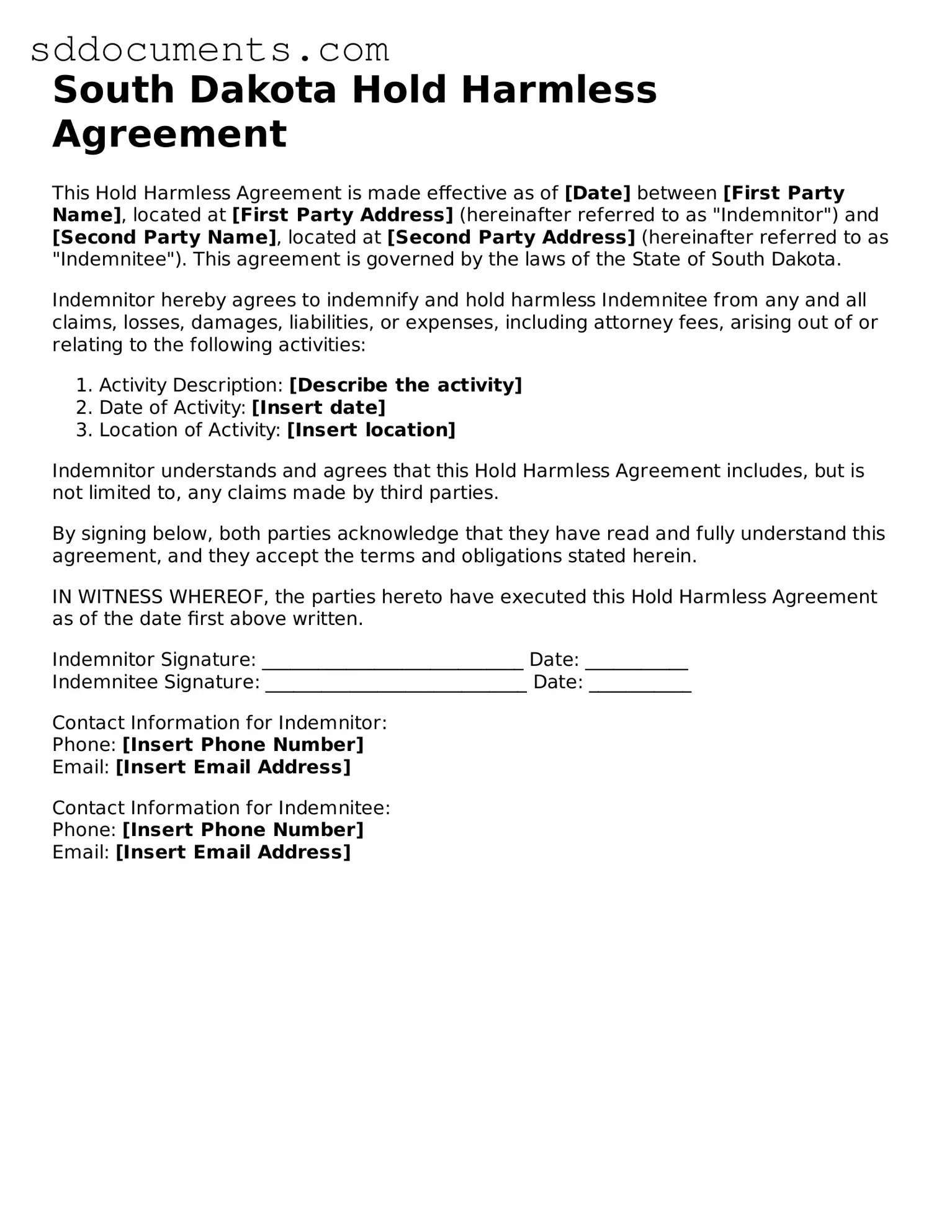Free Hold Harmless Agreement Template for South Dakota
The South Dakota Hold Harmless Agreement form is a legal document designed to protect one party from liability for damages or injuries that may occur during a specific activity or event. This agreement is crucial for individuals and organizations looking to mitigate risk while engaging in various activities. To ensure your interests are safeguarded, fill out the form by clicking the button below.
Customize Document Online
